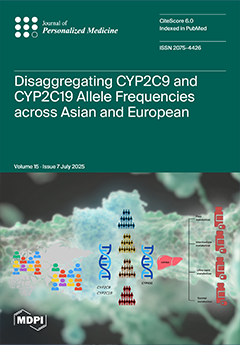Background: Differences in the prognosis and associated factors in patients with heart failure with a preserved fraction (HFpEF) according to sex remain uncertain.
Objective: The objective was to determine the relevance of sex-stratified predictive models in determining prognosis in HFpEF patients.
Methods: The study was a retrospective, multicenter study of patients previously hospitalized with ejection fraction ≥ 50% (HFpEF) using data from the SIDIAP database. The endpoints were mortality and rehospitalization. Predictive models were performed.
Results: We identified 2895 patients with HFpEF who were 57% female, with a mean age of 77 (standard deviation [SD] 9.7) years and a median follow-up of 2.0 (IQR 1.0–9.0) years. In the overall analysis, male sex was associated with a higher risk of mortality (HR 1.26, 95% CI 1.06–1.49,
p = 0.008) and rehospitalization (HR 1.14, 95% CI 1.03–1.33,
p = 0.04). After sex stratification, the mortality rates per 1000 patient years were 10.40 (95% CI 9.34–11.46) in men and 10.21 (95% CI 9.30–11.11) in women (
p = 0.7), and the rehospitalization rates were 17.11 (95% CI 16.63–18.58) in men and 17.29 (95% CI 16.01–18.57) in women (
p = 0.23). In men, the factors related to mortality were age (hazard ratio [HR] 3.14, 95% confidence interval [CI] 2.43–4.06), and hemoglobin (0.84, 0.79–0.89), while in women, they were age (HR 2.92, 95% CI 2.17–3.92), BMI < 30 kg/m
2 (1.7, 1.37–2.11), diuretics (1.46, 1.11–1.94), and a Charlson > 2 (1.86, 1.02–3.38). Rehospitalization in men was associated with age (HR 1.58, 95% CI 1.23–2.02), BMI < 30 kg/m
2 (0.75, 0.58–0.95), atrial fibrillation (1.36, 1.07–1.73), hemoglobin (0.91, 0.87–0.95), and coronary disease (1.35, 1.01–1.81). In women, the factors were age (HR 1.33, 95% CI 1.0–1.64), atrial fibrillation (1.57, 1.30–1.91), hemoglobin (0.86, 0.80–0.92), and diuretics (1.37, 1.08–1.73).
Conclusions: Non-stratified analyses underestimate the poor prognosis in women with HFpEF. Future studies should include analyses stratified by sex.
Full article





